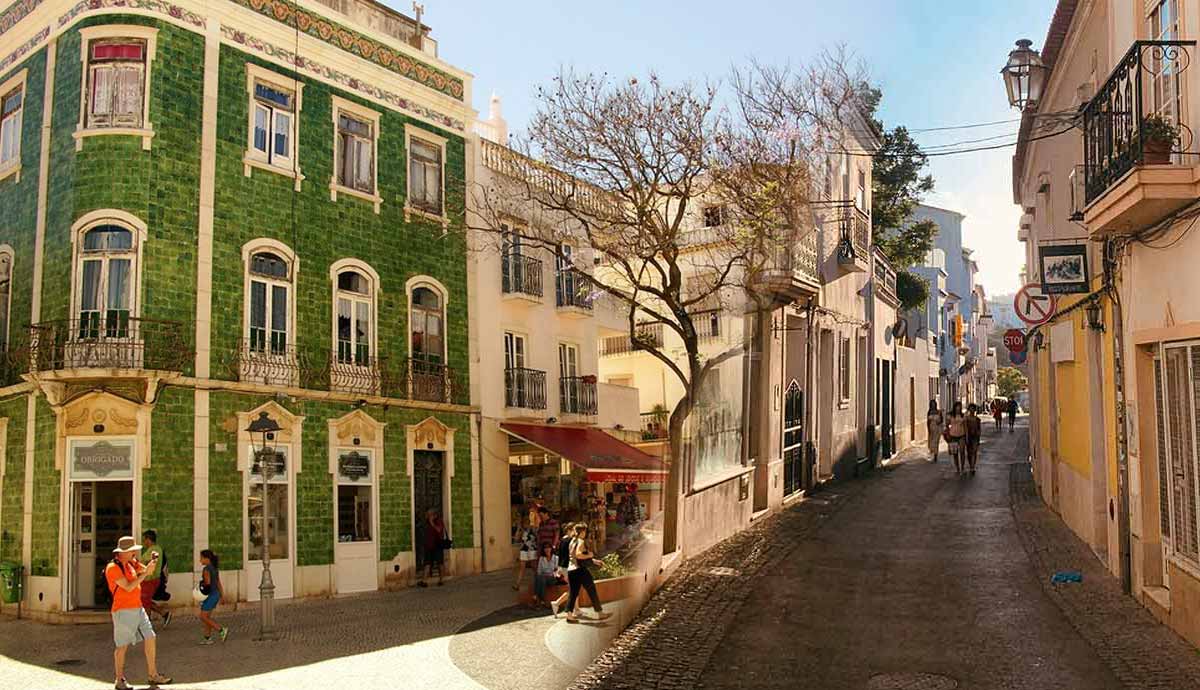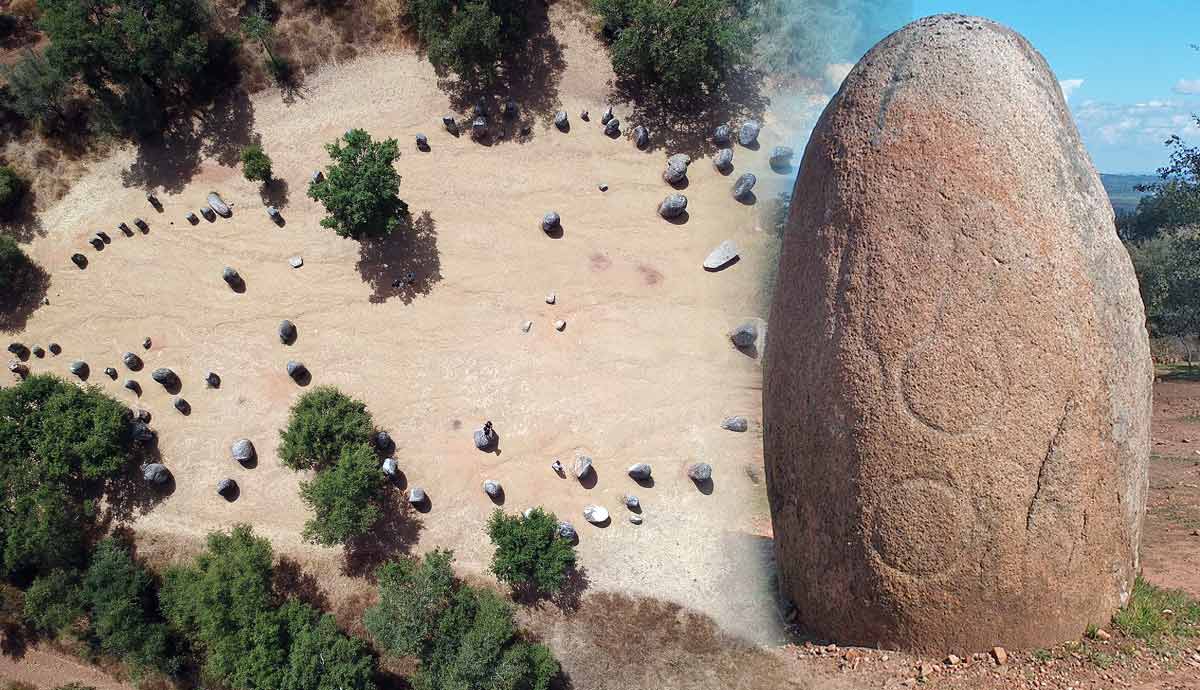
As nomadic tribes began to settle, they focused on their well-being and spirituality. These social transformations led to a strong belief in the afterlife and deep respect for the elderly. The megaliths you can see today in Portugal reflect a community identity and funerary practices.
Across the country, you can find dolmens, menhirs, and cromlechs. The most important are the Cromeleque dos Almendres, the Alcalar Megalithic monuments, the Anta do Zambujeiro megaliths, the Cromeleque do Xerez, and the Anta de Adrenunes. These impressive structures show human creativity and offer a glimpse into Prehistoric Portugal.
The Origins of the Portuguese Megaliths

The construction of megaliths in Portugal coincided with a shift from a nomadic hunter-gatherer lifestyle to settled agriculture. This transformation led to animal and plant domestication, allowing food production and storage.
Megaliths in Portugal first appeared between 5000 and 4000 BCE. Although these impressive structures show elements in common with others around Europe, megaliths in Portugal present distinctive features that are not easily found in other locations.
The first structures built were menhirs and cromlechs, followed by dolmens and tholos. The progression of these megalithic structures in Portugal reflects a gradual development that included more sophisticated architectural features and symbolism.
Common Megalithic Architectural Styles in Portugal
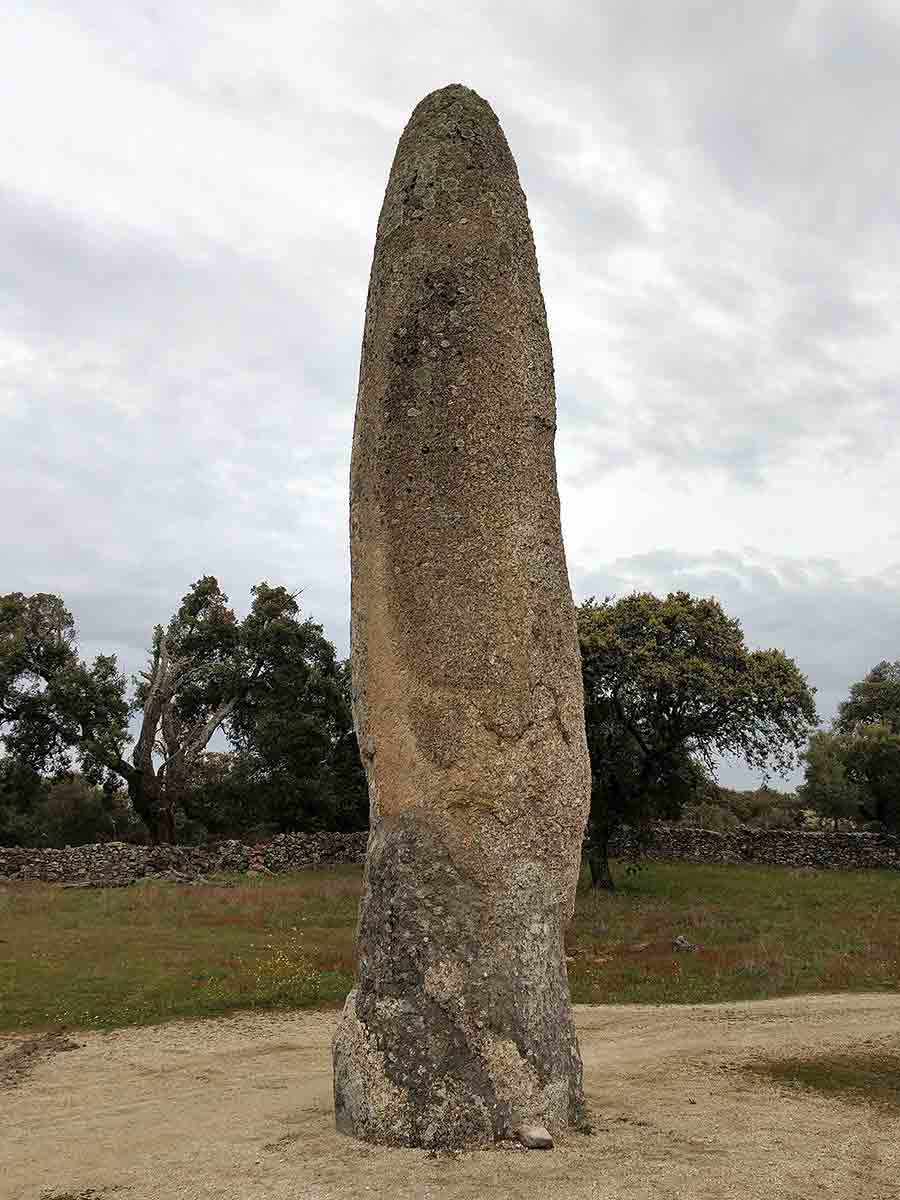
Here are the most significant features of the Portuguese megaliths you can expect to find.
Menhirs are very abundant in the Algarve and Alentejo regions. Across these southern regions of Portugal, tall upright stones were often placed isolated or in alignments. Some have engravings with anthropomorphic or abstract designs. Although they served different purposes, menhirs might have served as territorial markers, grave identifiers, or as part of fertility rituals.
Cromlechs are groups of menhirs usually arranged in circles and ellipses. Yet, a few examples of these megalithic structures use a rectangular or semicircular shape. The most famous cromlech in the Iberian Peninsula is the Cromeleque dos Almendres, located a few miles from Évora in the Alentejo region. However, throughout Alentejo and Algarve you can explore other cromlechs such as the Cromeleque de Vale de Maria do Meio, the Cromeleque da Portela dos Mogos, and the Cromeleque da Herdade do Xerez.
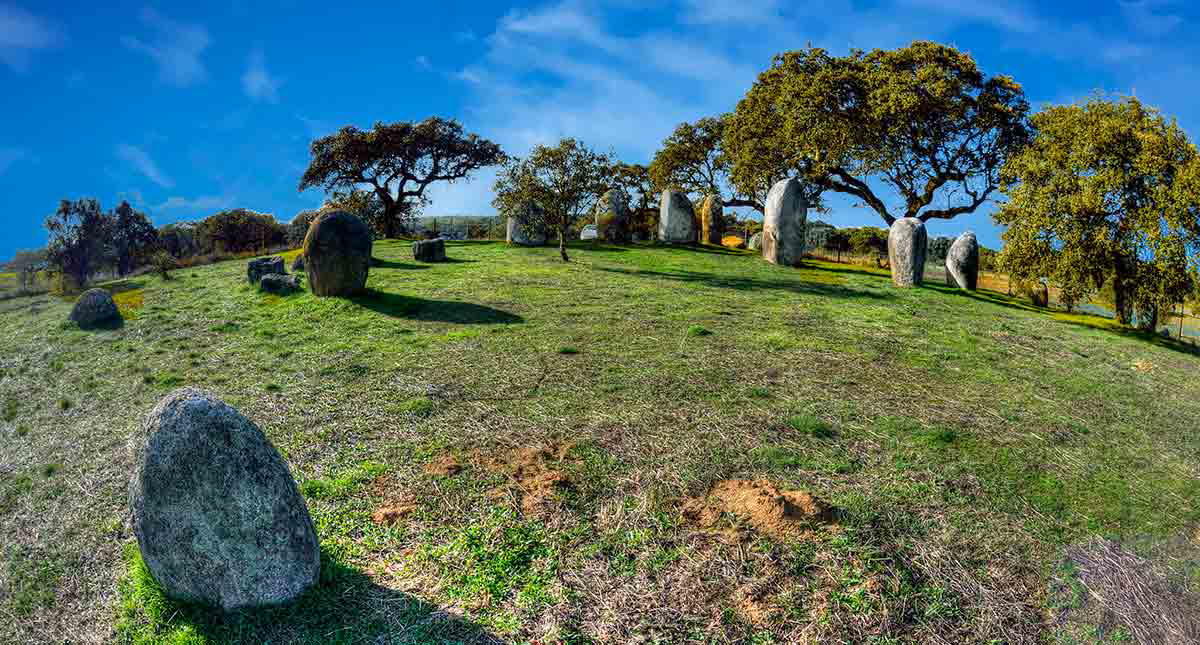
In Portugal, dolmens are usually referred to as “antas” and are mostly found in the Alentejo, Beira Interior, and Lisbon regions. These impressive megalithic structures reflect the social, technological, and spiritual complexity and developments of these Prehistoric people. Dolmens were built with large upright stones that support a heavy capstone. Although archaeologists still debate their purpose, dolmens are usually associated with funerary rituals. Anta Grande do Zambujeiro and Anta de Adrenunes are only a couple of examples of these megalithic structures in Portugal.
Tumuli, or “mamoa” in Portugal, are funerary monuments built with heavy stones commonly covered by a mound of earth and smaller stones. According to archaeologists, this was a form of collective burial developed during the Neolithic and Chalcolithic periods. These prehistoric landmarks are usually found in the North and the Center of Portugal.
A tholos is a circular, domed-shaped tomb, similar to a beehive. The dome was built by layering stones, progressively placed inward to form a dome-like shape. The entrance was made as a dromos, a long and narrow passage leading to the tomb. These structures were often built underground to create an enclosed chamber.
Portuguese Megalithism is also characterized by decorative elements such as carvings, engravings, and painted designs, mostly on menhirs and dolmens. While lines, radial patterns, and anthropomorphic designs are most common in menhirs, paintings and engravings are more common within dolmens. These differences allow archaeologists to better understand the purpose of these impressive prehistoric monuments.
Megalith Symbolism and Significance
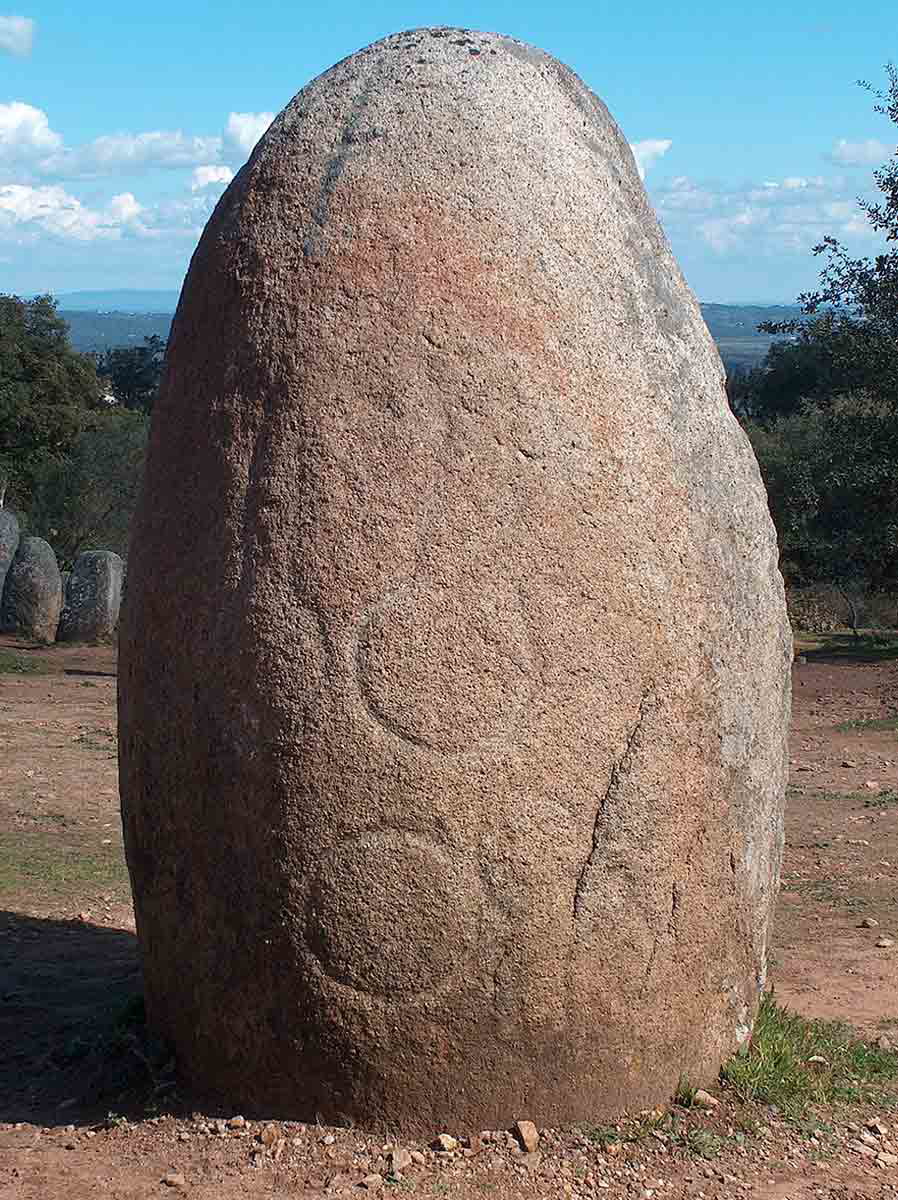
Archaeologists have yet to reach a consensus on the exact purpose of megalithic structures. Nevertheless, they agree that these landmarks held profound religious and symbolic significance.
Considering the orientation of many dolmens and cromlechs towards the sun or the moon, archaeologists believe these prehistoric people had an advanced understanding of astronomy. Further research has revealed that these monuments were used to mark solstices and equinoxes.
Archaeologists found various artifacts, including ceramics, arrowheads, and personal ornaments, inside dolmens. Considering its funerary purpose, these objects reveal a belief in the afterlife and in social identity after death. However, these artifacts also reinforce a theory that these megalithic sites might have been a pilgrimage or a seasonal gathering location.
In Portugal, the most significant megalithic monuments are located on hills and other natural points of elevation, which reveals an attempt to connect the sacred to the natural world.
Regional Distribution of Megalithic Sites in Portugal
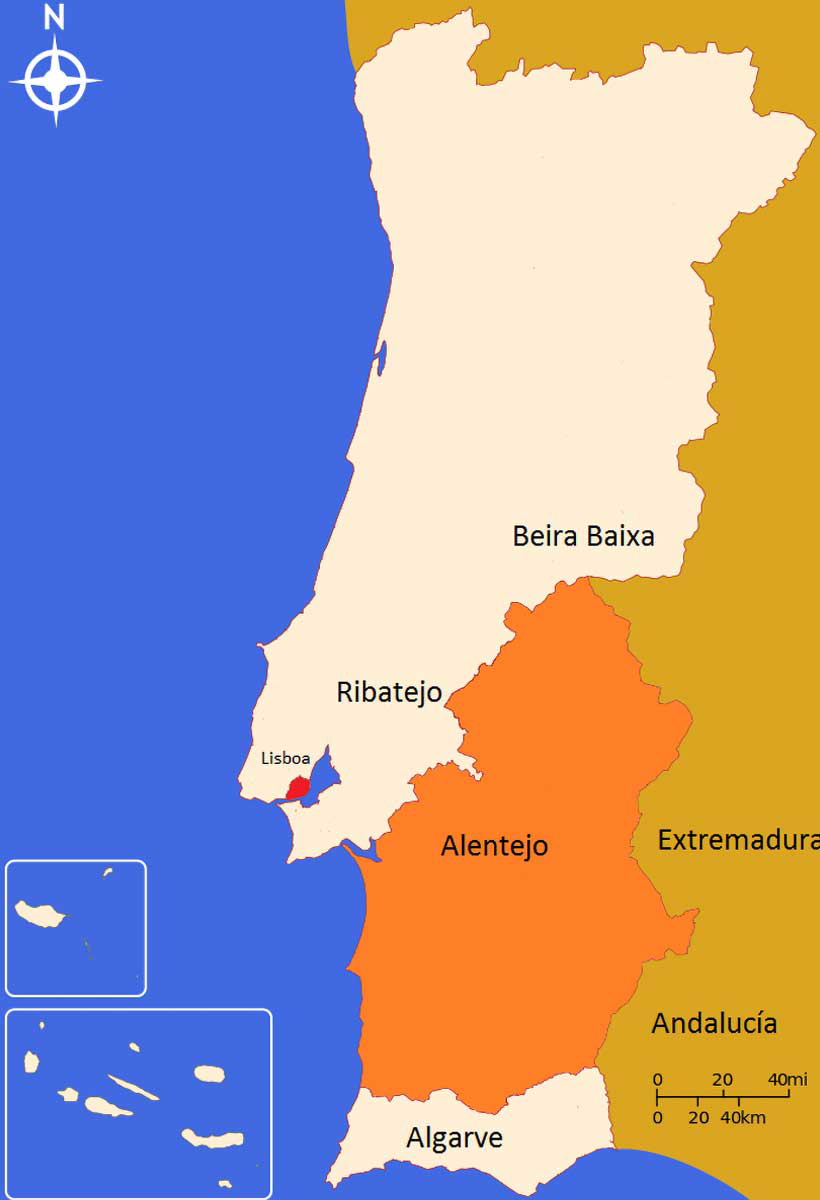
You can find megalithic monuments across continental Portugal. However, some regions feature these structures in greater abundance.
The Alentejo region, especially the Évora district, is where you can find some of the most interesting megalithic monuments in Portugal. In this area alone, there are more than ten megalithic enclosures, 100 isolated menhirs, 800 dolmens, and almost 450 megalithic villages.
The high concentration of these megalithic structures in the Alentejo region reveals that this was a preferred location for early settlers due to its fertile lands and abundance of water. Particularly around Évora, the hydrographic basins of three rivers drew hunter-gatherers to settle in the area.
The central Portuguese region of Beira Interior is another area abundant in megalithic sites, especially in the Serra da Estrela Mountain range. Due to ongoing research, new structures have been found in recent years. Recent studies have revealed the presence of more than 240 megalithic monuments in the Lafões territory.
Northern Portugal, specifically the Douro Valley and Trás-os-Montes areas, also holds numerous dolmens, burial mounds, and other megalithic structures.
5 Megalithic Monuments to Explore in Portugal
Although you can admire hundreds of megalithic sites in Portugal, here’s a list of the most important due to size, location, and archaeological significance.
1. The Megalithic Monuments of Alcalar
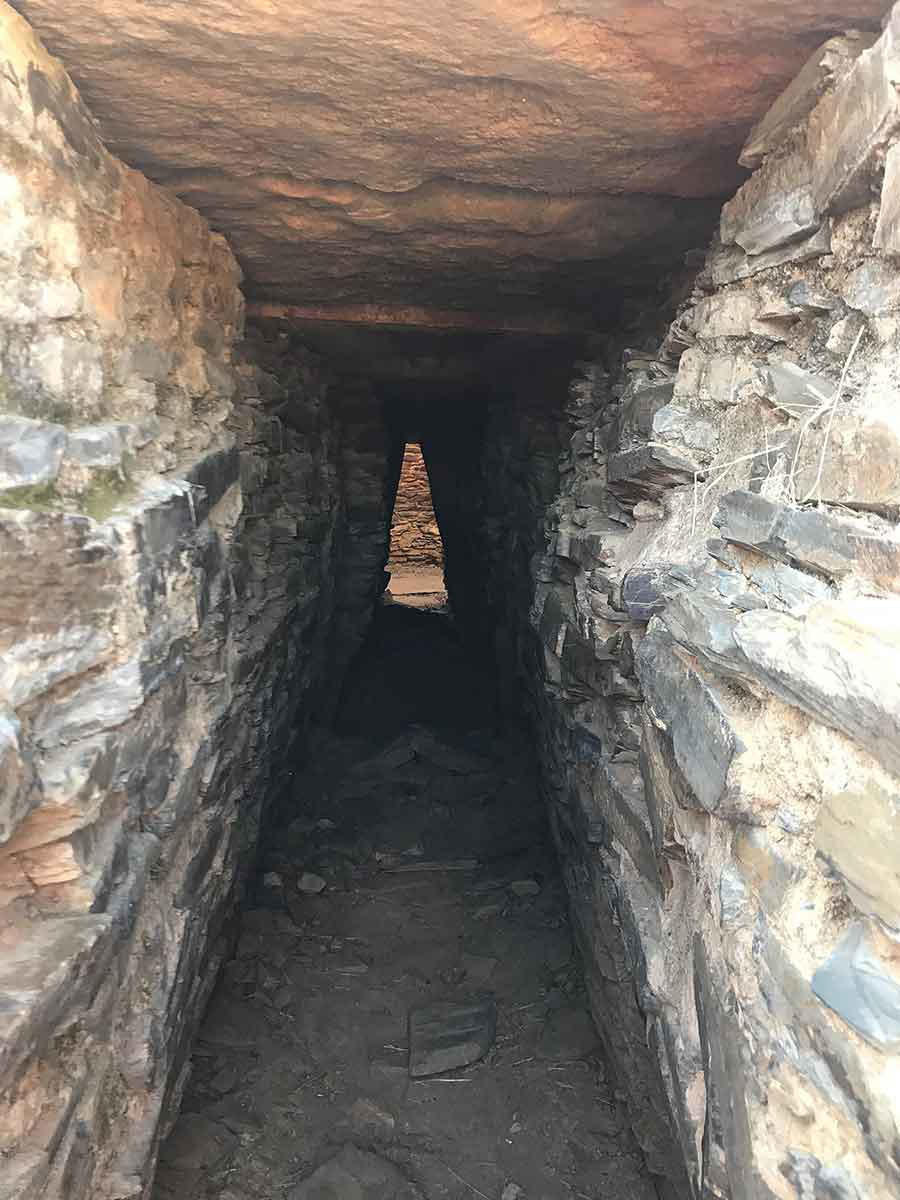
The Megalithic Monuments of Alcalar are a national monument and one of the most visited archaeological sites in the Algarve. Located a few miles from Portimão, this impressive necropolis dates back to the 5th millennium BCE and was built over the centuries up to the Chalcolithic. The megalithic monuments you see today were built by a community that inhabited the area around the 4th and 3rd millennia BCE.
This prehistoric landmark is located in a fertile area with easy access to natural resources, allowing herding, hunting, fishing, farming, and shellfish gathering. Alcalar complex includes a settlement and several funerary monuments made with local sandstone, such as 18 megalithic tombs and a tholos, spread over a ten-hectare area.
Dating back to the middle of the 3rd millennium BCE, Monument Seven is the most notable structure at Alcalar. This unique tholos features a passage leading to a burial chamber that includes false cupolas and side niches. Its 27-meter base is composed of schist stone and has an entrance facing east.
This dome-shaped structure was built on a hilltop, allowing it to be seen from afar. Ivory, copper, gold, and green stones were among some of the items retrieved from inside the tomb. These objects were imported from distant locations and reveal that this structure was reserved for the most influential people in the village. The rest of the population was buried elsewhere.
Besides visiting the archaeological site, you can learn more about these megalithic monuments at the interpretive center at Alcalar and the Museu de Portimão.
2. Anta de Adrenunes
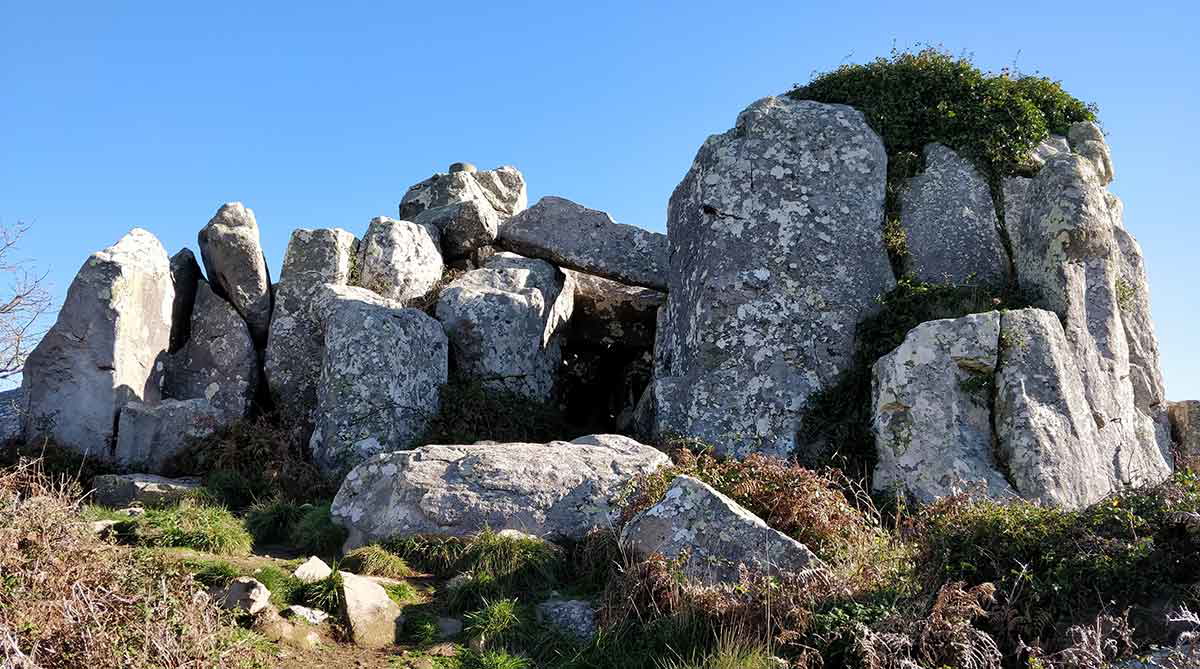
Anta de Adrenunes is an impressive megalithic site at Sintra-Cascais Natural Park, a few kilometers from the village of Sintra. This dolmen sits at 426 meters (1,397 feet) of altitude overlooking Cabo da Roca, the westernmost point of mainland Europe.
Anta de Adrenunes is a cluster of small boulders with a narrow passage, opening to a five-meter-high gallery topped by a long massive monolith placed over vertical stones.
This structure went unnoticed until the 19th century. After working on this megalithic site, Portuguese archaeologist Joaquim Possidónio Narciso da Silva suggested it was a collective necropolis despite not having found any evidence of its funerary purpose. However, in the 20th century, archaeologists Félix Alves Pereira and Paulinho Montez argued this site was not suitable for burials, and as a result, this designation was incorrect.
Recently, archaeologists have considered Anta de Adrenunes as a natural formation with several architectural elements. Moreover, recent excavations found man-made features such as granite wedges and rectangular stone shapes, suggesting a human-made structure.
Considering Anta de Adrenunes’s position overlooking Cabo da Roca and the sunset, this archaeological site is believed to have had ritualistic or astronomical significance.
3. Anta Grande do Zambujeiro
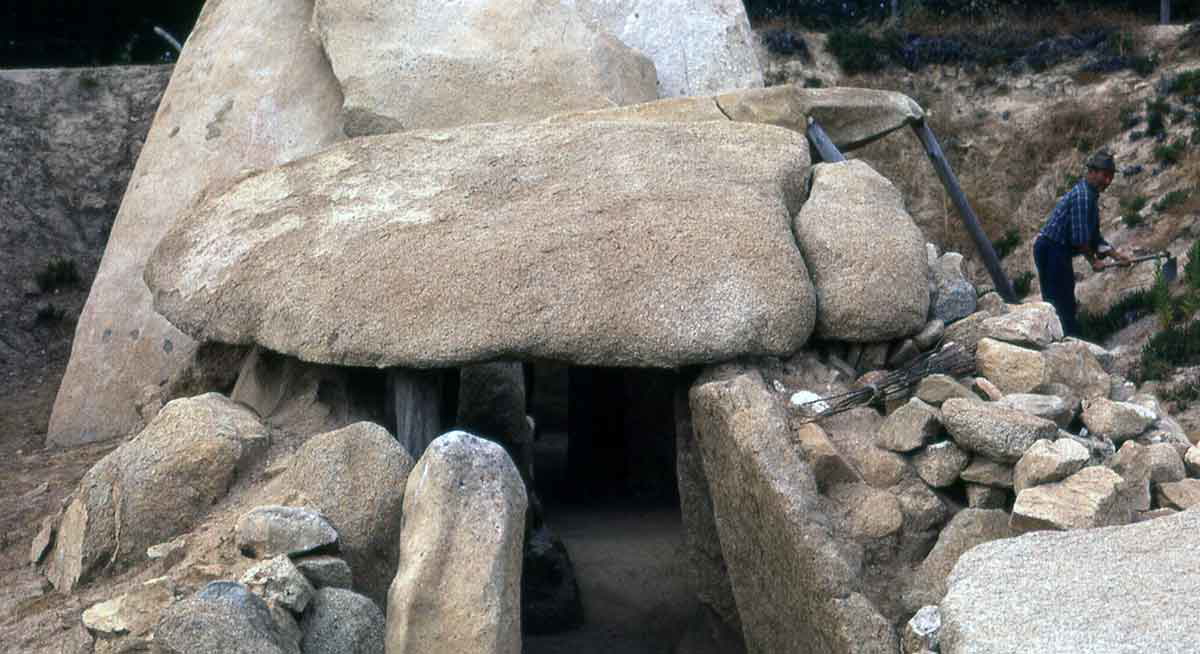
Anta Grande do Zambujeiro is one of the most significant megalithic monuments in the Iberian Peninsula. Located a few miles away from Évora in the Alentejo region, this archaeological site was built in the late Neolithic Period, between 4000 and 3500 BCE.
It is composed of a single polygonal-shaped chamber made with seven eight-meter-high stones (26 feet), which were originally covered in a seven-meter-wide stone (23 feet). A 12-meter-long corridor (39 feet), 1.5 meters wide (five feet), and two meters high (six and a half feet) leads into the chamber, and a huge decorated menhir signals the entrance. Considering the monument’s features, archaeologists believe Anta do Zambujeiro was a collective burial site.
The dimensions and complexity of this monument show the technical skills and complex social organization of the Neolithic people who built it.
Archaeological campaigns from the 1960s revealed several artifacts such as beads, ceramics, and tools, some of which you can admire at Évora Museum. Today, Anta Grande do Zambujeiro is a national monument and part of the Évora Megalithic Circuit.
4. Cromeleque do Xerez
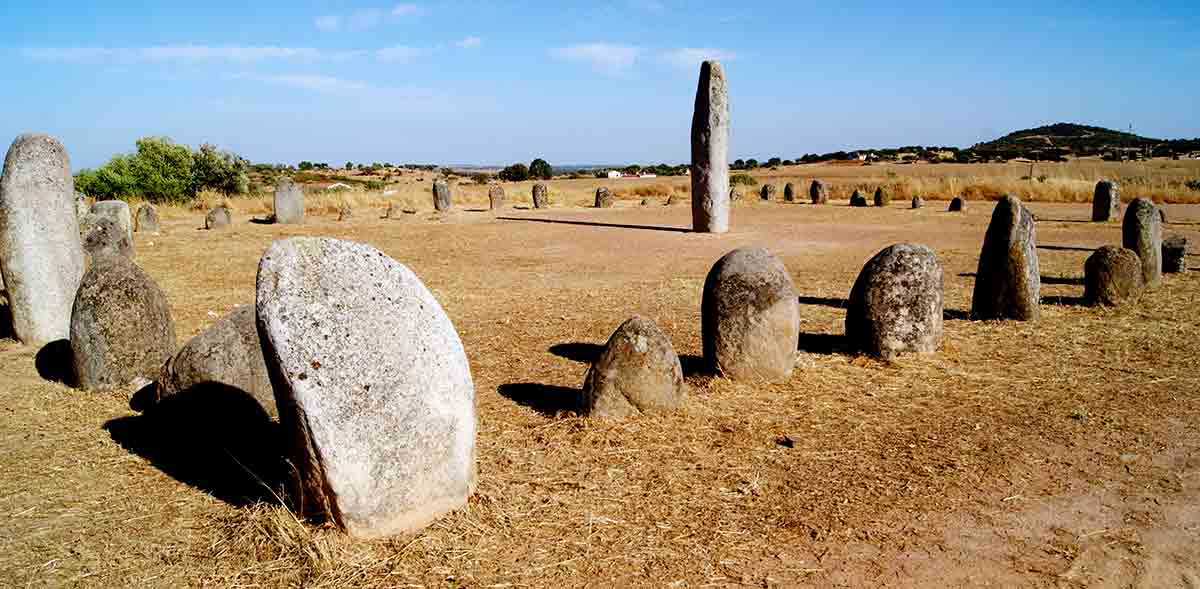
The Cromeleque do Xerez is a megalithic complex constructed in the Neolithic Period, between the 4th and 3rd millennium BCE. The cromlech is made of 50 granite menhirs of varying sizes between 1.2 and 1.5 meters tall (four to five feet), aligned in a quadrangular formation, surrounding a four-meter-tall (13-foot) menhir placed at the center. This phallic-shaped monolith features several carved depressions.
José Pires de Gonçalves discovered this cromlech in Herdade do Xerez, near the Spanish border, in 1969. In 1998, an archaeological campaign led by Mário Varela Gomes from Universidade Nova de Lisboa found several fragmented artifacts, including pottery, silica, and quartz.
The site’s architectural complexity, the menhir decoration, and the archaeological material retrieved suggest the original location was used in the Upper Paleolithic. Archaeologists also found evidence of a construction phase from the early and middle Neolithic and believe this location was used throughout the Chalcolithic Period.
Due to the construction of the Alqueva Dam and the flooding of the megalithic site in 2004, this cromlech was moved from its original location. The new cromlech was placed near Convento da Orada in Monsaraz, using sketches produced during the 1969 archaeological campaign.
5. Cromeleque dos Almendres
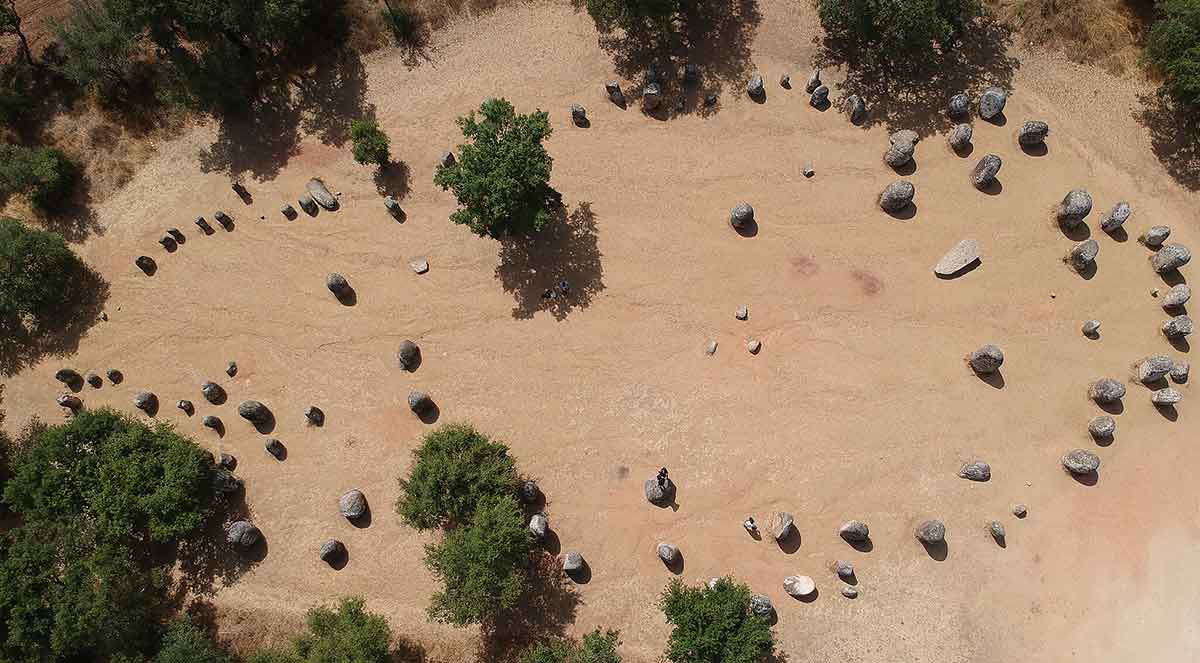
The Cromeleque dos Almendres is the largest and most significant megalithic monument in the Iberian Peninsula.
Located twelve kilometers (seven miles) from Évora in the Alentejo region, at 400 meters of altitude, this archaeological site dates back to the 6th millennium BCE. Although it is known as the “Portuguese Stonehenge,” this megalithic monument predates England’s Stonehenge by two millennia.
This archaeological site faces east on a hill slope and includes 95 granite monoliths aligned in elliptical formations. Most of the menhirs are small, ovoid, and cylindrical shaped, with the largest stones reaching three meters tall (ten feet). Some of these monoliths are decorated with engravings such as lines, concentric circles, and anthropomorphic figures.
The monument is aligned with the sunrise during the summer solstice, reflecting the builders’ deep knowledge of astronomical events. Archaeologists believe this was a sacred location that reflects the ritual sophistication of these prehistoric communities.
Cromeleque dos Almendres was declared a National Monument in 2015 due to its archaeological significance and state of conservation.



